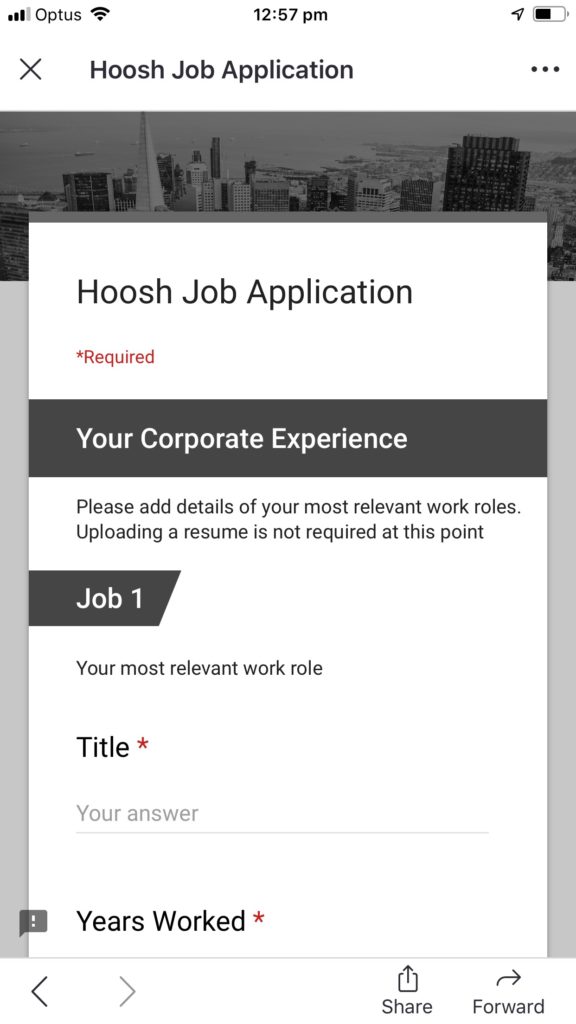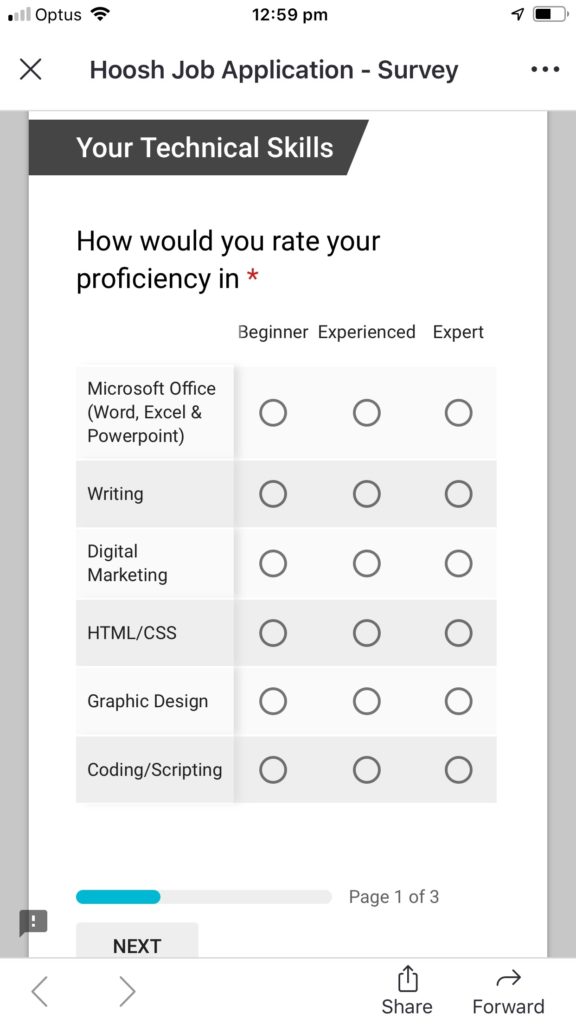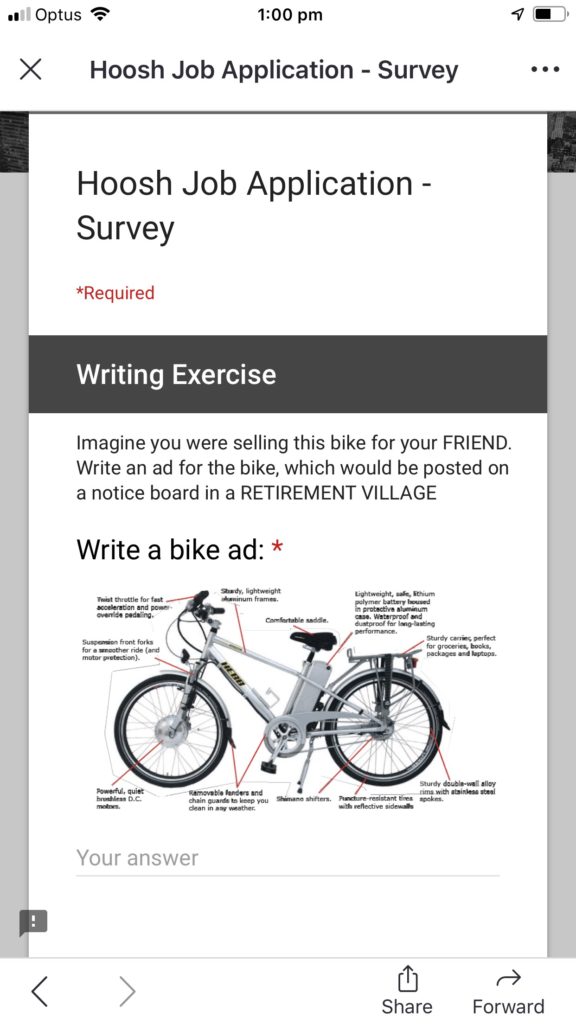This is a guest post written by Fab Capodicasa, CEO of Hoosh Marketing
When the job market swings in favor of employees, it can make finding and recruiting talent more difficult on companies. That’s what’s happened recently in the United States, where unemployment is historically low and hiring volume is extremely high.
As a result, it’s no surprise companies are looking for every advantage they can leverage to quickly and efficiently find the right candidate — including turning to AI phone screeners to automate the initial vetting of candidates. Unfortunately, it seems that job candidates don’t appreciate being vetted by a computer.
But I knew there had to be other ways to use technology to help with recruiting without scaring candidates away.
Hoosh Marketing is a relatively small 30-person marketing agency in Sydney, Australia that I started in 2013. Our main problem relating to our hiring process was that we advertise in the Universities (as well as regular job sites), so we get hundreds of applicants for every job ad, and we have only a part-time human resources employee. The workload for both HR and hiring managers was overwhelming. We actually had many complaints from candidates because we didn’t get back to them at all. We just didn’t have the manpower to do so.
At this point, we knew we had to come up with a better way to orchestrate our hiring process. Since we couldn’t throw more bodies at the problem, we knew we had to think differently and more intelligently.
Related: 3 recruiting automations we use
Re-imagining an automated recruitment process
Here in Australia, our unemployment rate has been low as well and our company recently overhauled and automated our candidate screening process. Yes, we did it to stay competitive in the job hiring market, but also because we believed the automated process we created through Workato’s intelligent automation platform would be more enjoyable for candidates and easier for us to manage on the backend.
In setting out to reimagine our hiring process we had a few goals. First, was to go from a terrible recruitment process to one that’s so good that candidates, even though they didn’t get the job, would still say, “that was so pleasant dealing with that company.” Second, another goal was to improve the experience so much that those same candidates would use our candidate referral program to help us find better employees. Usually, that’s an internal benefit, but we thought why not extend a referral bonus to anyone looking for a job. But if your recruiting experience is terrible, it doesn’t matter how much money you’re going to give people, they’re not going to refer anyone.
A terrible experience, in our minds, is the typical way things operate: you apply to a job that looks interesting, you feel like you’re qualified, and then you hear nothing back from the company. This happens all the time, even from us previously, and it leaves a terrible impression of your company on potential hires.
A big part of creating a new hiring process is imagining what the HR process could be like if you were to design it from scratch. It had to be mobile first and really have all tasks be accomplished on a mobile device. It had to be really frictionless, that meant no cover letters or updating resumes to submit. It had to be fast and efficient. We wanted qualified candidates to speed through the process and non-qualified candidates to know within days whether they were moving on or rejected.
So, we knew the goals of the project and what the process would look like but had no idea how to execute it. Then we discovered Workato, which allowed us to unlock some pretty complex workflows via its intelligent automation engine. We just don’t have the manpower and developer expertise as a small agency to tackle multi-user, multi-system workflows like we’re doing with our recruiting process without Workato.
Related: A look at the top recruitment automation trends
Our New Process
Now our hiring process goes something like this: let’s say we’re looking to hire a junior marketing consultant with a few years experience under their belt. This leads to us getting plenty of applications. The first round of the application consists of a few dropdown questions and for the candidate to shoot a 30 second video explaining what they understand about the job or why they’d be a good fit.
Workato takes the answers and videos, feeds it into a database, analyzes them, and auto-scores the candidates answers through recipes we built. Candidates that reach the right threshold are immediately sent to the next round and the ones who don’t are rejected via email two days later. Regardless, candidates are automatically alerted whether they passed or failed this stage.
The next round consists of a quick quiz, which is auto-scored. Again, those that pass will have their quiz, video, and questions automatically packed up into a candidate profile for both HR and the hiring manager to look at. Those that get approved for onsite interviews are then sent a note to pick three available windows for an interview and when we do the logistics on our end, a calendar invite is kicked off to the candidate.
All of this is automated through Workato recipes. The total application time should take under 10 minutes, as it’s designed to be done in 1-2 sittings on a mobile phone during a commute. When’s the last time you applied for a job like that? If you’re the right candidate, you might get an onsite interview with us the next day or the day after.
What our process looks like for candidates




The Power of Intelligent Automation
Now, the process isn’t perfect. We have manual processes baked in because there are sometimes qualified candidates that get rejected or unqualified candidates that get passed through, but those happen less frequently now than when our recruitment process was entirely manual.
Either way, the speed and efficiency of this process has even led our agency to build this for customers. It’s not robots or AI, but it’s a very cutting-edge automated process with apps and systems already widely available to anybody with a little bit of gumption to build it.
The power of intelligent automation gives our company the ability to compete with, and in some respects outpace, much larger companies with teams of developers. Whatever we can imagine when it comes to digital transformation and improving workflows and processes, like how we hire candidates, can be created by our team in mere days.
Learn what Hoosh Marketing can do for your organization here >
